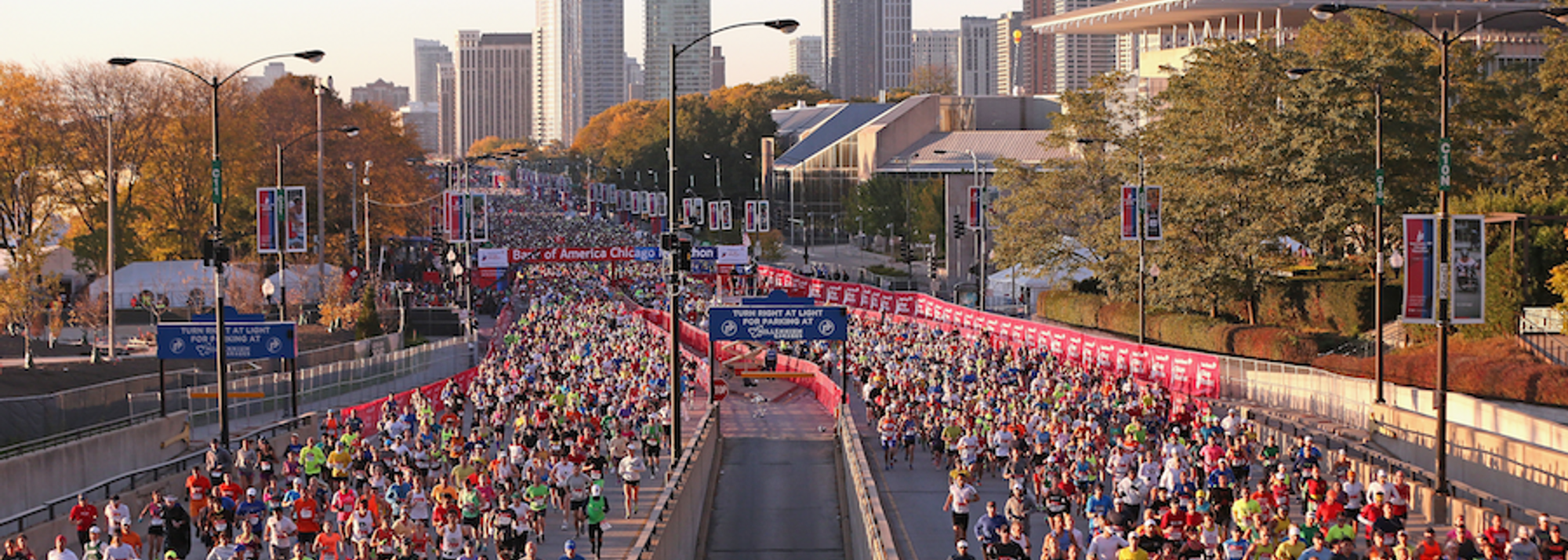Chicago Marathon Mass
Professional data analyst Barry Smyth has tapped into the deep reserves of marathon data available online. His findings identify the common pitfalls that derail so many recreational runners – and the best ways to avoid them.
More than half a million people worldwide ran a marathon in 2015. The vast majority were not elite runners.
Barry Smyth, professor of computer science at University College Dublin, loves numbers, and over the summer he started to dig through the mounds of stats on recreational marathon runners that can be found online.
“There’s a really rich set of data out there,” says Smyth, an expert in machine learning and artificial intelligence. “So many of the scientific studies are focused on the elites, as you’d expect, but I haven’t seen a lot focusing on recreational runners.”
That spurned Smyth, who is set to run the 2016 Dublin Marathon, to study the numbers in greater depth. His results are eye-opening, and he talks SPIKES through some of the findings he reached from looking at Chicago Marathon data from 2005-2016.
Man vs Woman
“By far the most important factor when it comes to performance is your gender,” Smyth says.
Men are faster than women – no shocks there. That gender has greater influence on your finish time than whether you are under or over 40 is less obvious conclusion. “But I think the big surprise for me was how much better women are at their pacing,” Smyth adds.
He found that “women are consistently better at producing an even split than men for a given finish-time beyond 150 minutes”. Even when times are scaled to neuter the gender bias in terms of performance outcome, Smyth “still found that women were running a more disciplined race with more even pacing”, and less likely to hit the wall (more on that later).
Slow and steady wins the pace
Consistent pacing has benefits beyond kudos. For Chicago, Smyth found that “the fastest runners exhibit pace variation of less than 5%” for the first and second half of the marathon.
Runners can be split into three categories: positive (slower second half), negative (faster second half) and even splitters (variation of less than 2% between first and second halves). Those latter two categories are those that correlate to a faster marathon time.
“Calculated over all participants, the average finish-times for even, negative, and positive splitters is 242, 256, and 280 minutes,” according to Smyth’s Chicago findings.
"The lower pace variation for females suggests that women are more disciplined than men"
“Running as even a pace as possible is the best way of running your personal best,” Smyth says, though he is quick to point out that correlation is not the same as causation – “it is unwise to conclude that forcing an even split, for example, will guarantee a better finish-time”.
One thing he can say is that pacing groups have a “big influence” on good pacing. “I found that something like five times more runners ran even splits when they were running with or near a pacing group,” he says.
A world without walls
Smyth defines the wall – AKA bonking – as when a participant slows down by at least 33% in the second half of their race. For Chicago, he found that 50% of people who hit the wall ran their first 5k as their fastest segment. Conversely, those whose opening 5k was their slowest never hit the wall, and finished an average of 50mins faster than those speedy starters. Smyth says that “avoiding going out too fast at the start” is one of the best pieces of advice a marathon runner can be given.
The research also found that “male runners are 3–4 times” more likely to hit the wall than women – disciplined pacing appears to pay dividends.
“You think about the cousin of the boy racer is the fast starter in marathons,” Smyth says. “They tend to be male, going out a little bit too hard then blow up later in the race, and have erratic pacing.
“Maybe women are a bit more controlled in their pacing, perhaps even a bit more conservative.”
Older, wiser, faster
In his Chicago data Smyth found “that just over 19% of participants complete more than one marathon (at least, during the 2005–2016 period)”. Men are more likely to repeat that women (22% vs 16%); as are faster runners, with close to half of three-house finishers returning compared to “30% of those with 270-minute finish-times”. Repeat runners are also generally older.
And experience counts: repeat marathon runners tend to have more disciplined splits and post quicker times. Smyth concludes: “On the one hand, being a bit older, you do tend to slow down, but on the other hand, if you’ve repeated the marathon a few times it takes years off your race time.”
Dog food for thought
Smyth says he’d be a fool not to incorporate his findings into his own marathon training. “You have to eat your own dog food,” he laughs. The 2016 Dublin Marathon will be his third, and he has an idea of what he has to do to achieve his target time of 3hrs 30mins.
He aims to not to run too hard in the opening 10km of his race and maintain as even a pace as possible throughout, which means running with a pacing group, as per his findings.
“A good way to run an even split is to find a pacing group that matches your target time and stick with it as best you can,” he adds. “That’s what I plan to do next weekend.”
Graphs courtesy of Barry Smyth. Follow him on Twitter and click these very words for more of his marathon findings





